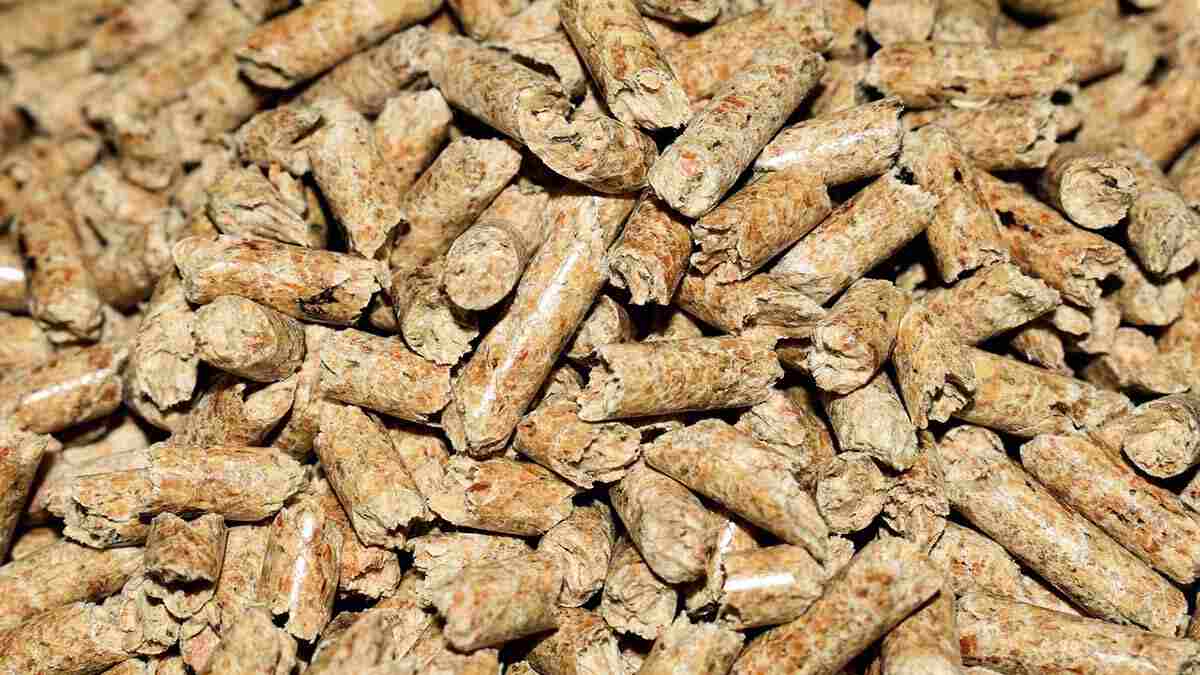Wood pellet production using sawdust is a sustainable and efficient way to create a valuable energy source and reduce waste. Wood pellets are widely used as a renewable fuel for heating and power generation.
Introduction to Wood Pellets
Wood pellets are small cylindrical units made from compressed sawdust, a by-product of wood processing. They are a versatile and eco-friendly energy source known for their efficiency in various applications. These include heating systems, power generation and more.
Wood Pellet Production Process
Here is a step-by-step guide on how to produce wood pellets using sawdust:
1. Collect Sawdust
Gather sawdust from sawmills, woodworking shops or any other sources of wood waste. Make sure the sawdust is clean and free from contaminants like nails or large debris.
2. Drying
Sawdust should have a moisture content of around 10-12% for optimal pellet production. Use a drying system, such as a rotary dryer or a belt dryer to reduce the moisture content. This step is crucial for pellet quality.
3. Size Reduction
If the sawdust particles are too large they should be further reduced in size. A hammer mill or a chipper can be used to break down the sawdust into smaller particles.
4. Pelletizing
The heart of the process is pelletizing. A pellet mill is used for this purpose. Inside the pellet mill, the sawdust is compressed under high pressure and heat, causing it to soften and bind together. The natural lignin in the wood helps in this binding process. The pellet mill consists of a die and rollers. The sawdust is forced through small holes in the die, forming compacted pellets.
5. Cooling
Once the pellets are formed, they are hot and soft. They need to be cooled to room temperature to harden. A counterflow cooler or a simple cooling tray can be used for this purpose.
6. Sieving and Packaging
After cooling, the pellets may go through a sieve to remove any fine particles or dust. The final step involves packaging the wood pellets in bags or storing them in bulk.
7. Quality Control
Throughout the process, it’s essential to monitor the quality of the pellets. Also verify that they meet the necessary standards in terms of size, moisture content, ash content and durability.
8. Storage
Store the finished wood pellets in a dry and cool place to prevent moisture absorption and maintain their quality. Proper storage is crucial to ensure the pellets don’t deteriorate.
9. Marketing and Distribution
Once your wood pellets are ready, you can market and distribute them to consumers, biomass power plants, or other potential buyers. Make sure to adhere to any regulations and certifications required for the sale of wood pellets.
10. Sustainability Considerations
It’s important to source sawdust from sustainable forestry practices. Ensure that the wood used for sawdust production is harvested responsibly to minimize environmental impact.
11. Equipment and Machinery
Pellet mills, Hammer mills, Dryers and Cooling systems. The capacity of your machinery will depend on your expected production volume.
Market Trends and Demand
The demand for wood pellets is on the rise due to their sustainable and renewable characteristics. Many countries are investing in biomass energy, further increasing the market demand.
The Future of Wood Pellet Production
As the world seeks sustainable energy sources, wood pellet production is likely to grow. A continuous process of research and technological advancements seeks to enhance the efficiency of production.
Conclusion
Producing wood pellets from sawdust is an environmentally friendly way to use wood waste and provide a renewable energy source. It can contribute to reducing greenhouse gas emissions and dependence on fossil fuels. Additionally, it can be a profitable business if done efficiently and in compliance with relevant regulations.
FAQs
Are wood pellets a sustainable energy source?
Yes, wood pellets are considered sustainable as they utilize sawdust, a waste product and have a lower carbon footprint compared to fossil fuels.
What is the ideal moisture content for wood pellets?
The ideal moisture content for wood pellets typically falls between 6-8% to ensure optimal performance.
How can I store wood pellets safely?
To store wood pellets safely, keep them in a dry and cool place to prevent moisture absorption.
What are the economic benefits of using wood pellets?
Wood pellets are cost-effective and less susceptible to price fluctuations making them an attractive long-term investment.
What is the future of wood pellet production?
The future of wood pellet production looks promising, as it aligns with the global shift towards renewable and sustainable energy sources. Technological advancements are expected to further enhance the production process.
Also Read
Combustible Dust: Understanding Explosion, Classification And Prevention
10 Tips for Miter Saw Dust Collection

Leave a Reply